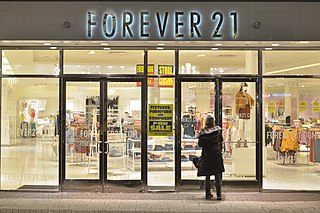
Logistics is the part of supply chain management that deals with the efficient forward and reverse flow of goods, services, and related information from the point of origin to the point of consumption according to the needs of customers. Logistics management is a component that holds the supply chain together. The resources managed in logistics may include tangible goods such as materials, equipment, and supplies, as well as food and other consumable items.

Sales are activities related to selling or the number of goods sold in a given targeted time period. The delivery of a service for a cost is also considered a sale. A period during which goods are sold for a reduced price may also be referred to as a "sale".

Inventory or stock refers to the goods and materials that a business holds for the ultimate goal of resale, production or utilisation.
Discounts and allowances are reductions to a basic price of goods or services.

A warehouse is a building for storing goods. Warehouses are used by manufacturers, importers, exporters, wholesalers, transport businesses, customs, etc. They are usually large plain buildings in industrial parks on the outskirts of cities, towns, or villages.
Vendor-managed inventory (VMI) is an inventory management practice in which a supplier of goods, usually the manufacturer, is responsible for optimizing the inventory held by a distributor.

In economics, market clearing is the process by which, in an economic market, the supply of whatever is traded is equated to the demand so that there is no excess supply or demand, ensuring that there is neither a surplus nor a shortage. The new classical economics assumes that in any given market, assuming that all buyers and sellers have access to information and that there is no "friction" impeding price changes, prices constantly adjust up or down to ensure market clearing.

Cross-docking is a logistical practice of Just-In-Time Scheduling where materials are delivered directly from a manufacturer or a mode of transportation to a customer or another mode of transportation. Cross-docking often aims to minimize overheads related to storing goods between shipments or while awaiting a customer's order. This may be done to change the type of conveyance, to sort material intended for different destinations, or to combine material from different origins into transport vehicles with the same or similar destinations.
Consignment is a process whereby a person gives permission to another party to take care of their property and retains full ownership of the property until the item is sold to the final buyer. It is generally done during auctions, shipping, goods transfer, or putting something up for sale in a consignment store. The owner of the goods pays the third-party a portion of the sale for facilitating the sale. Consignors maintain the rights to their property until the item is sold or abandoned. Many consignment shops and online consignment platforms have a set time limit at which an item's availability for sale expires. Within the time of contract, reductions of the price are common to promote the sale of the item, but vary by the type of item sold.

A business can use a variety of pricing strategies when selling a product or service. To determine the most effective pricing strategy for a company, senior executives need to first identify the company's pricing position, pricing segment, pricing capability and their competitive pricing reaction strategy. Pricing strategies and tactics vary from company to company, and also differ across countries, cultures, industries and over time, with the maturing of industries and markets and changes in wider economic conditions.

A closeout or clearance sale is a discount sale of inventory either by retail or wholesale. It may be that a product is not selling well, or that the retailer is closing because of relocation, a fire, over-ordering, or especially because of bankruptcy. In the latter case, it is usually known as a going-out-of-business sale or liquidation sale, and is part of the process of liquidation. A hail sale is a closeout at a car dealership after hail damage.
In accounting, the inventory turnover is a measure of the number of times inventory is sold or used in a time period such as a year. It is calculated to see if a business has an excessive inventory in comparison to its sales level. The equation for inventory turnover equals the cost of goods sold divided by the average inventory. Inventory turnover is also known as inventory turns, merchandise turnover, stockturn, stock turns, turns, and stock turnover.

Once the strategic plan is in place, retail managers turn to the more managerial aspects of planning. A retail mix is devised for the purpose of coordinating day-to-day tactical decisions. The retail marketing mix typically consists of six broad decision layers including product decisions, place decisions, promotion, price, personnel and presentation. The retail mix is loosely based on the marketing mix, but has been expanded and modified in line with the unique needs of the retail context. A number of scholars have argued for an expanded marketing, mix with the inclusion of two new Ps, namely, Personnel and Presentation since these contribute to the customer's unique retail experience and are the principal basis for retail differentiation. Yet other scholars argue that the Retail Format should be included. The modified retail marketing mix that is most commonly cited in textbooks is often called the 6 Ps of retailing.
Overstock, excessive stock, or excess inventory arise when there is more than the "right quantity" of goods available for sale, or when "the potential sales value of excess stock, less the expected storage costs, does not match the salvage value". It arises as a result of poor management of stock demand or of material flow in process management. Excessive stock is also associated with loss of revenue owing to additional capital bound with the purchase or simply storage space taken. Excessive stock can result from over delivery from a supplier or from poor ordering and management of stock by a buyer for the stock. Excess or unnecessary inventory is listed as one of the seven wastes or "muda" in Taiichi Ohno's Toyota production system.
A marketing channel consists of the people, organizations, and activities necessary to transfer the ownership of goods from the point of production to the point of consumption. It is the way products get to the end-user, the consumer; and is also known as a distribution channel. A marketing channel is a useful tool for management, and is crucial to creating an effective and well-planned marketing strategy.

In a supply chain, a vendor, supplier, provider or a seller, is an enterprise that contributes goods or services. Generally, a supply chain vendor manufactures inventory/stock items and sells them to the next link in the chain. Today, these terms refer to a supplier of any goods or service. In property sales, the vendor is the name given to the seller of the property.
Inventory management software is a software system for tracking inventory levels, orders, sales and deliveries. It can also be used in the manufacturing industry to create a work order, bill of materials and other production-related documents. Companies use inventory management software to avoid product overstock and outages. It is a tool for organizing inventory data that before was generally stored in hard-copy form or in spreadsheets.
There are many types of e-commerce models, based on market segmentation, that can be used to conducted business online. The 6 types of business models that can be used in e-commerce include: Business-to-Consumer (B2C), Consumer-to-Business (C2B), Business-to-Business (B2B), Consumer-to-Consumer (C2C), Business-to-Administration (B2A), and Consumer-to-Administration

Liquidity Services (NASDAQ:LQDT) operates a network of e-commerce marketplaces.
The retail format influences the consumer's store choice and addresses the consumer's expectations. At its most basic level, a retail format is a simple marketplace, that is; a location where goods and services are exchanged. In some parts of the world, the retail sector is still dominated by small family-run stores, but large retail chains are increasingly dominating the sector, because they can exert considerable buying power and pass on the savings in the form of lower prices. Many of these large retail chains also produce their own private labels which compete alongside manufacturer brands. Considerable consolidation of retail stores has changed the retail landscape, transferring power away from wholesalers and into the hands of the large retail chains.









